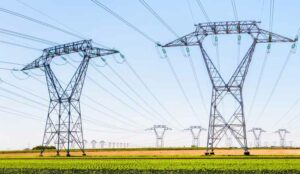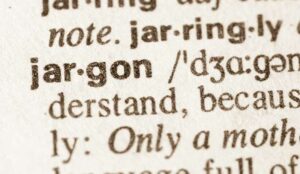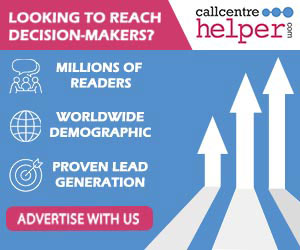Pierce Buckley at babelforce, looks at the current state of customer service in the utilities sector.
In the last few years, the newspapers have been rumbling about a customer service crisis in utilities.
They paint quite a bleak picture, but I have to ask myself, can it really be that bad?
(Spoiler: I don’t think so, but before we get into that let’s recap the news.)
There’s one headline in particular that sticks in the mind; it goes as far as to declare ‘the death of customer service’ after a young mother was accidentally left without heating all winter.
In the UK another customer at a major gas provider exchanged over 40 emails and still failed to get their bill corrected.
This is apparently widespread because UK energy and broadband customers spent an estimated 27.3 million hours dealing with poor customer service in a single year.
In Germany, Reuters reported that call centres at major energy suppliers were flooded with desperate customers as bills spiked. Some of them were reduced to tears.
Also in Germany, a Spiegel columnist commemorated the 30th birthday of the phrase ‘Servicewüste Deutschland’ (or ‘Service Desert Germany’).
Taken together, these headlines do suggest that something’s up at a systemic level. But I also work with utilities customer service teams who don’t have these problems. So there must be a more nuanced picture here. Let’s examine it together.
Utility Failures are Newsworthy, But There’s Something the Headlines Don’t Capture
When a utility fails, it’s not just frustrating, it can seriously disrupt people’s lives. That’s why stories about heating outages, billing errors, or long waits often end up in the headlines.
Because utilities provide essential services, their problems are more likely to attract attention than a late online shopping order.
Now, there’s definitely something going on. These stories don’t exist for no reason, and the data does show that many utilities are struggling with customer service. (We’ll get into the data soon).
There are things that those stories don’t capture, however.
What I’ve noticed is that:
- Some utility companies are actively investing in improving their customer service, and it’s working
- Sometimes utilities have customer service problems that are outside their control
During the 2022 energy crisis, German call centres were swamped, with some customers in tears over soaring bills, while in the UK, energy websites crashed as millions tried to submit meter readings before a price cap increase.
In that example, customer service got overloaded and wait times skyrocketed. But it was geopolitics, and an issue with rapid scaling – rather than ‘bad customer service’.
Customer service teams at the utilities we work with take their responsibility very seriously, and they’re taking action to prepare for this kind of surge.
OOWV – a German water company – adopted a babelforce phoneline automation for meter readings. When a regulation change caused a huge contact surge, OOWV used it to automatically process 15,000 meter readings over the phone in the space of a week. No overloaded phone lines, and no delays to normal service.
So – it’s true that some utilities have a customer service problem. But it’s also true that some of them are starting really smart transformation projects.
One day, once it’s caught on sector-wide, the headlines may tell a new tale of redemption.
The Numbers Paint a More Nuanced Picture
In the UK, the sector scores 70.0 on the Customer Satisfaction Index, compared to an all-sector average of 76.1.
In Germany, only 8 out of 27 electricity providers managed a “good” rating for customer satisfaction, with most described as “satisfactory.”
And in the Nordics, surveys show one in four customers felt their complaints were never resolved at all.
So not quite ‘the death of customer service’ but definitely a sector with some problems.
There is, however, evidence of improvement as well.
babelforce’s new white paper, The State of Customer Service in the Utilities Sector, reports that broadband providers appears to be making progress.
According to Ofcom, 63% of UK broadband complaints were related to slow speeds, outages, or connection problems, rather than direct interactions with customer service.
Likewise, satisfaction with complaint handling has climbed by 58%, and first contact resolution (FCR) rates have improved by 5% since 2022.
So overall, what these figures point to is likely the drag of outdated systems, underinvestment in customer service, and regulatory obligations that are tough to meet when your infrastructure is creaking.
In other words, utilities aren’t failing because their agents don’t care. They’re failing because the conditions they operate in make responsive service hard to deliver.
Inside Most Utility Call Centres, The Same Thing is Happening
Step inside most utility contact centres and the pattern is familiar. Agents are doing their best, but they’re weighed down by the way work is organised. Legacy systems don’t make it easy.
In fact, more than half of European energy companies admit their old stacks are slowing down digitalisation. But the real problem is how that plays out day to day.
Agents spend their time fielding the same repetitive queries – meter readings, billing checks, password resets. It’s low-value work that clogs the lines and leaves vulnerable customers waiting longer than they should.
And the pressure doesn’t come at an even pace. Contact volumes can spike overnight, a regulation change can force thousands of meter readings in a single week, or a price cap adjustment can crash supplier websites and leave customers desperate for answers.
Even when utilities invest in new digital channels, the old problems often remain. Customers switch from web to phone and end up repeating themselves. Agents pick up a call without context and have to start from scratch.
Add in the fact that customer service is still often treated as a back-office function rather than a core part of the business, and you’ve got the perfect storm – frustrated customers, overworked staff, and managers who can’t move fast enough to make things better.
Some Utilities Are Already Proving Automation Can Turn Things Around
Despite these issues, the picture isn’t all bleak. A handful of companies are showing what’s possible with customer service automation for utilities.
Just look at energy company EnBW. They handle around 150,000 calls every month. In 80% of cases, automation is now involved in the interaction, whether that’s resolving the call fully, capturing details, or routing the customer to the right agent.
The result is that average handling times have been cut by 35 seconds per call, and annual savings in the hundreds of thousands. More importantly, their staff aren’t trapped in repetitive admin.
Or take OOWV, which we touched on earlier, one of Germany’s largest water providers. A regulation change meant tens of thousands of customers had to submit meter readings in the space of a week.
Instead, OOWV deployed a babelforce-powered voicebot that handled more than 15,000 readings automatically in just seven days. Customers could submit data 24/7 without waiting on hold, while agents were freed up to focus on the complex cases that genuinely needed them. Happily, our customer service software for utilities saved them from queues, delays and stressed out agents.
These examples don’t paint a picture of a sector in terminal decline. They show what happens when utilities stop patching over the cracks and start modernising their operations. Faster service, happier customers, less stress for teams.
The Lesson is That Customer Service Needs to Evolve
So, what do we take from all this? The media storm makes utilities look like villains, and the numbers show they’re lagging behind. But the success stories prove something else. Customer service isn’t dead, it just needs reworking.
And the blueprint is already there:
Automate the routine so that agents aren’t drowning in meter readings and password resets.
Integrate systems, so a customer doesn’t have to repeat themselves every time they switch channels.
Balance human and machine, so automation handles scale and speed while people focus on empathy and judgement.
Any modern customer service platform for utilities will have these capabilities.
The companies that are already taking this approach are seeing the benefits: quicker response times, higher satisfaction, and lower stress for teams. In other words, the customer service crisis is a wake-up call for utilities to build something better.
This blog post has been re-published by kind permission of babelforce – View the Original Article
For more information about babelforce - visit the babelforce Website
Call Centre Helper is not responsible for the content of these guest blog posts. The opinions expressed in this article are those of the author, and do not necessarily reflect those of Call Centre Helper.
Author: babelforce
Reviewed by: Jo Robinson
Published On: 3rd Nov 2025
Read more about - Guest Blogs, babelforce, Pierce Buckley




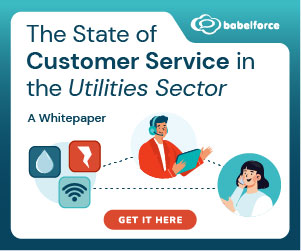

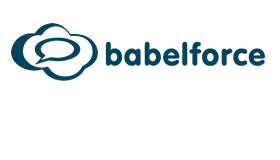 babelforce is the composable customer experience platform uniting agents and automation.
Our platform gives you the power to create the customer experiences you’ve always wanted, with tools anyone can use.
babelforce is the composable customer experience platform uniting agents and automation.
Our platform gives you the power to create the customer experiences you’ve always wanted, with tools anyone can use. 

